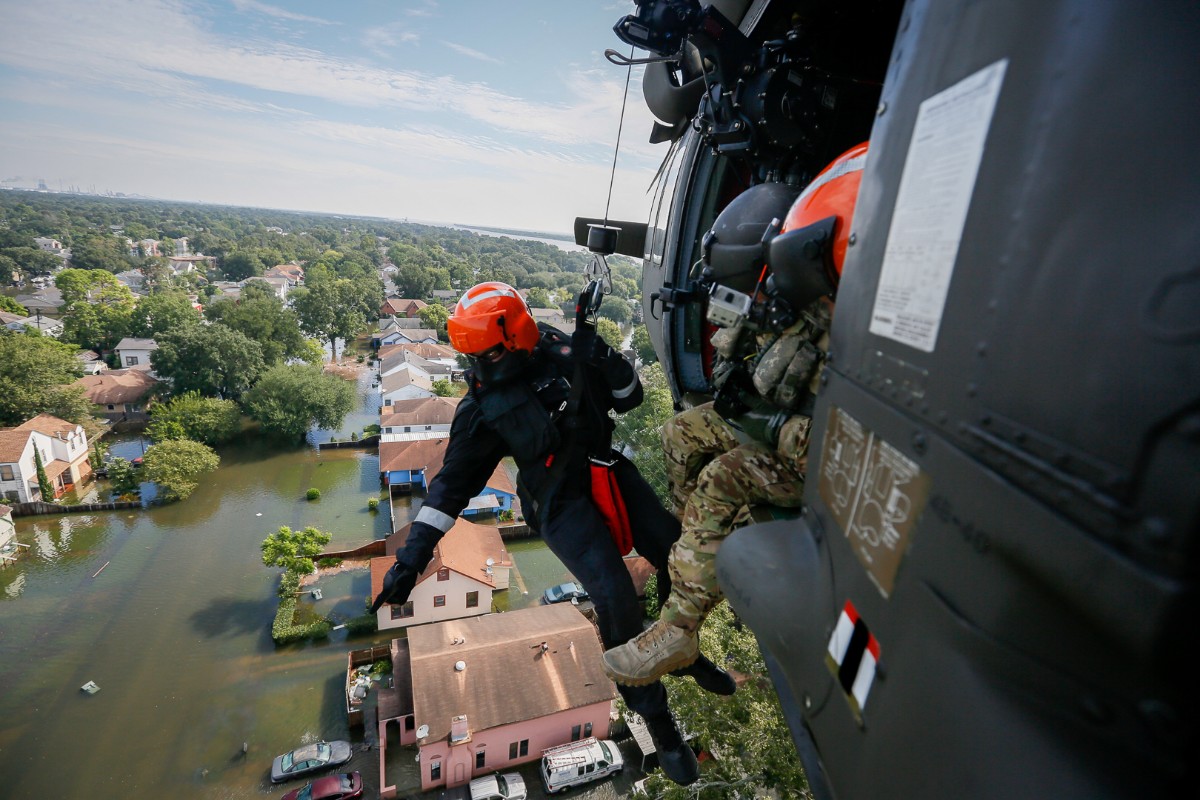 Photo courtesy of The National Guard
Photo courtesy of The National Guard
Facing Climate Change, America’s Medical Infrastructure is Unprepared for the Next Superstorm
Four of the five most costly hurricanes to occur in the United States have been in the past 15 years. Climate change is increasing the frequency of Category 4 and 5 hurricanes in the Atlantic, and despite a spate of intensely damaging storms, America’s healthcare systems are still unprepared.
From Katrina to Harvey, Hospitals are Unprepared
When Katrina hit New Orleans on August 29th, 2005, the damage to hospitals was largely superficial. The problems arrived when the levees protecting the city breached on Monday night; by Tuesday morning, 11 hospitals housing 1,749 patients and 7,600 additional people were surrounded by floodwaters up to 20 feet deep. Most hospitals lost power, communications, and water and sewage service within the first two days. At Memorial Medical Center, 45 patients died during the aftermath of the storm. Nearly 70,000 troops were eventually deployed to the area, hampering military readiness and operations elsewhere.
By the time Superstorm Sandy swept through New York in 2012, the city’s hospitals and other medical facilities had prepared evacuation plans. 6,400 patients from 37 healthcare facilities were evacuated; two hospitals were evacuated by National Guardsmen in the midst of the storm. Eighty-nine percent of hospitals reported experiencing critical challenges such as breakdowns in infrastructure and care and staffing issues. The National Guard and U.S. military had 61,000 troops mobilized and ready – the storm’s effects could have been far worse were it not for the coordinated response by local first responders, National Guard, Department of Defense, and Federal Emergency Management Agency.
In 2017, Hurricane Harvey made landfall near Corpus Christi, Texas, stalling over southeast Texas for more than a week. The storm dumped more than 50 inches of rainfall in parts of Houston. According to a recent report, climate change tripled the odds of an event like Harvey occurring. National Guardsmen, emergency responders, and volunteers undertook over 120,000 rescues, often relying on hospitals as impromptu shelters and evacuation sites. Rescue operations often required military assets, including National Guard and Coast Guard helicopters. While hospitals were far more prepared for Harvey, they did not anticipate the duration of the storm and intensity of evacuation.
Reason for Hope
Lessons learned from previous disasters have resulted in significant improvements. After Katrina, hospitals in the area formed regional healthcare coalitions to advance regional planning, coordination, stockpiling, and communications. The process of rebuilding included creating contingency plans and redundancy in hospital systems.
Following Sandy, New York’s Bellevue Hospital was rebuilt with electrical and mechanical replacements on higher floors and an additional generator to reduce dependence on the city’s electrical grid. New York City developed a city-wide command center that coordinates disaster response between hospitals and emergency management staff.
The Texas Medical Center in Houston was built with a “hazard mitigation plan” – creating an internal heating and power system instead of relying on the Houston power grid. When Harvey hit, it was one of a few medical centers to remain operational.
Despite these advances, many coastal hospitals are still vulnerable. Climate change is increasing the frequency of Category 4 and 5 hurricanes in the Atlantic, and sea level rise, warmer waters, and increased water loading are strengthening their power. One study concluded that the average speed of hurricanes is slowing, leading more to stall near coastlines, much like Harvey.
Going Forward
While the lessons learned from Katrina, Sandy, and Harvey have been implemented in their respective regions, a comprehensive overhaul of disaster preparation has not come.
Going forward, hospitals and other medical providers must be part of areawide disaster and evacuation planning. Secondary effects of hurricanes, such as flooding and the loss of power, must be part of government and hospital administrative planning. Plans must be practical, actionable, and redundant – including evacuation procedures and provisions for command centers, even in the case of power failures. Hospitals should plan for the loss of essential infrastructure and utilities and have backup and contingency plans for severe storms.
Such infrastructure and planning changes would be enormously costly, but rebuilding after hurricanes is equally costly. Such changes are critical for managing risk in the face of the coming storm.






